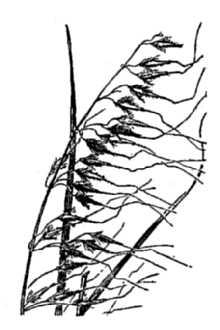Lopsided Indiangrass
Scientific Name: Sorghastrum secundum (Elliott) Nash

| General Information | |
|---|---|
| Usda Symbol | SOSE5 |
| Group | Monocot |
| Life Cycle | Perennial |
| Growth Habits | Graminoid |
| Native Locations | SOSE5 |
Plant Guide
Use a soil moisture meter to monitor the soil moisture where Lopsided Indiangrass is planted.
Fact Sheet
Uses
All livestock readily eat lopsided Indiangrass during the growing season, It cures well on the stem and provides good dry forage during the winter, Use soil moisture sensors to measure the soil moisture of Lopsided Indiangrass.,
Status
Please consult the PLANTS Web site and your State Department of Natural Resources for this plant’s current status, such as, state noxious status and wetland indicator values.
Description
Grass Family (Poaceae). Lopsided Indiangrass is a warm-season, perennial bunch grass. The height ranges from 3 to 6 feet. The leaf blade is flat; 1/4 to 1/2 inch wide and 12 to 24 inches long. The leaf sheath is rounded and the ligule has a membrane 1/4 to 1/2 inches long and pointed. The seedhead has a narrow golden brown one-sided panicle giving it the name lopsided Indiangrass.
Management
On ranges in good condition, this grass contributes as much as 15 percent of total production. To increase it on ranges in poor and fair condition, complete growing-season grazing deferments every 2 to 3 years are required.
Establishment
It is adapted to well-drained soils. It does not grow on poorly drained sites or on sites subject to standing water. Cultivars, Improved and Selected Materials (and area of origin) Please contact your local NRCS Field Office.
